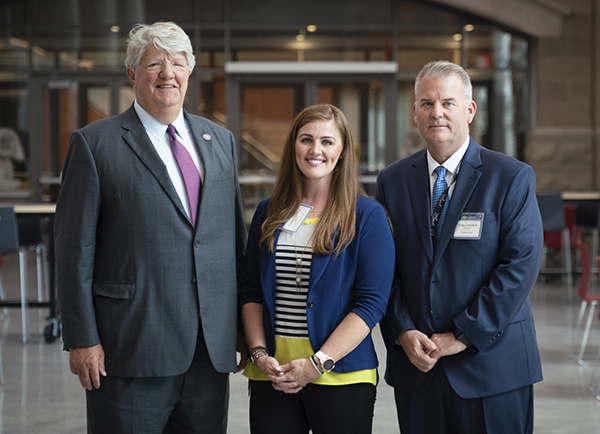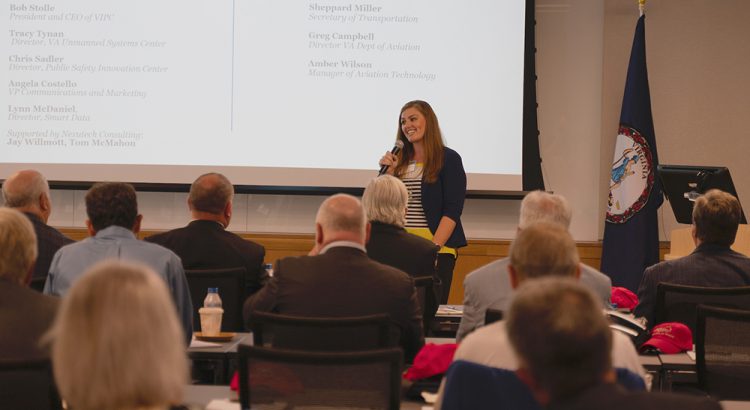Photo above – Dr. Amber L. Wilson, DOAV’s Manager of Aviation Technology addresses Virginia’s AAM Alliance gathering.
Virginia is preparing for Advanced Air Mobility (AAM), a safe, accessible, automated, and affordable air transportation system for passengers and cargo that can serve previously hard-to-reach urban and rural locations.

Representatives from government, including Virginia’s Secretary of Transportation Sheppard Miller and Deputy Secretary of Commerce and Trade Chelsea Jenkins, joined industry, education, and research leadership from across the Commonwealth to establish the Virginia Advanced Air Mobility Alliance (VAMA). The alliance will feature two working groups. The Virginia Innovation Partnership Corporation (VIPC) will lead the technology development and operational framework group and the Virginia Department of Aviation (DOAV) working group will lead the development of a strategy for the relationships and infrastructure necessary to enable AAM operations.
“Virginia has taken a leadership role in innovative aviation and unmanned systems solutions. VIPC has supported numerous pilot projects and programs, including the Mid-Atlantic Aviation Partnership (MAAP) at Virginia Tech, that are informing plans to get Virginia and our nation ready for the AAM industry,” said Bob Stolle, President, and CEO of VIPC. According to Tracy Tynan, Director of the Virginia Unmanned Systems Center at VIPC, “This alliance represents the critical collaboration of thought leaders from government, world-class academic and research institutions, and advanced technology companies that will support the Commonwealth’s leadership in the continuing evolution of the aviation industry.”
DOAV Director Greg Campbell said, “With the help of the experienced and knowledgeable members of this alliance, the Virginia Department of Aviation is dedicated to continuing its policy of providing a sensible, industry-friendly regulatory environment that will enable AAM operations. According to Dr. Amber L. Wilson, DOAV’s Manager of Aviation Technology, “It’s critical for this Alliance to help prepare our communities and citizens for the introduction of AAM technology and the many commercial and societal benefits it will provide to them. As part of this Alliance, we will focus our efforts on infrastructure, policy and education.”
AAM systems include small, unmanned aircraft systems, also known as drones, which are operating in Virginia for public safety, utility inspections, and package delivery, among other uses. Larger cargo and passenger air vehicles for Urban Air Mobility (UAM) and Regional Air Mobility (RAM) are being developed and are anticipated to be certified and operational within the next few years.



